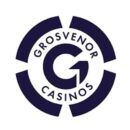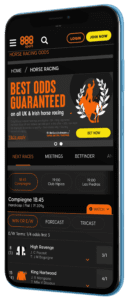Types of Horse Racing Bets
Here are some of the most popular betting markets on offer at the races.
To Win
Exactly what the name suggests: pick the outright winner of the race. To select the right horse and jockey here, you’ll need to consider a variety of factors, rather than simply picking the favourite for the race. While of course the bookie’s favourite does often win, you’ll need to think about form, conditions and distance for a more accurate wager.
To Place
Increasing your chances of winning your bet is the option to place. This is a wager that pays out when the horse you’ve picked finishes either first or second in the race.
To Show
Going one further are show bets, where punters select a horse to finish either first, second or third in the race. This will increase the chances of winning once more, but potential returns will be smaller compared to the bets mentioned above.
Each Way
Each way bets comprise two distinct elements, both of which are in relation to the same horse. With each way betting, successful bettors will receive a maximum payout if the selected horse finishes first, and a smaller payout if the same horse finishes in one of the placing positions, i.e. second, third, or fourth. The odds on the place section of the bet is usually set at around a quarter of the odds of the win.
Let’s say a horse running at Epsom has odds of 10-1 to win the race. A £10 each way bet will receive returns of £35 (£25 winnings + £10 stake) if the horse finishes in one of the placing positions. But if the horse wins, both portions of the bet come through, meaning that both halves of the betting slip will pay out. In this instance, total returns will be £135 (£100 winnings on the win wager + £25 winnings on the place wager + £10 stake).
Depending on how many horses are taking part in the race, horse racing betting sites will inflate and deflate the positions of an each way bet, so be sure to check how far down your horse can place in order to qualify for an each way payout.
Treble
A treble bet is an accumulator with three selections. For a treble wager to come in, all three sections of the bet must be successful, which means treble bets have higher odds in comparison to single or double wagers. In addition to this, the three components of a treble bet must be from three different races. For example, you might pick an outright winner for three consecutive races at the Breeders’ Cup
Yankee Bet
A Yankee bet is a wager consisting of 11 bets, stretched over four different races. These bets comprise six double bets, four trebles, and a four-fold acca. Needless to say, calling a wholly successful Yankee bet is incredibly hard to do, but betting sites will pay out Yankee bets at a portion of the odds if some of the components are successful. As there are no single bets involved with a Yankee, two of the selections must win in order to generate any returns, but the payout on two winning selections alone is unlikely to be higher than the original stake.
Punters are attracted to Yankee bets because, unlike standard accumulators, they can still generate significant winnings even if some parts of the bet lose. However, because Yankee bettors are placing 11 individual wagers, original stakes tend to be much larger than single, double, or treble bets. Before taking part in a Yankee bet, it’s wise to make use of Yankee bet calculators, which are available at the best horse racing betting sites.
Super Heinz
Super Heinz betting is the ultimate beast: 120 bets spread over seven different races. These 120 wagers are made up of 21 doubles, 35 trebles, 35 four-folds, 21 five-folds, seven six-folds, and one seven-fold. To be in with a chance at receiving any payouts on a Super Heinz bet, wagers on at least two of the seven races must be successful; if they are, returns can be generated in big increments as other parts of the bet come in. Always use a Super Heinz bet calculator before wagering in this market, and remember that all 120 bets must have the same unit stake.
Forecast/Tricast
For a successful forecast bet, you’ll need to select the horses that finish first and second in the right order. Tricast bets go one further, requiring the right pick on the third-place finisher too.
Accumulator
Forecast and tricast wagers could technically be classed as an accumulator — a bet that combines the odds of multiple outcomes for bigger payout potential. The difference is that there are no limits on the number of selections in an accumulator, and many bookmakers offer increased odds boosts with each leg you add to your bet slip.
Ante-Post
Ante-post bets are those made before the markets have opened, on the expectation that the odds will be more favourable. Generally placed before the day of the race, ante-post bettors run the risk of forfeiting their stake if their horse doesn’t run.










 The online gambling market is highly risky and full of internet quacks that can rob you off your hard-earned bucks. As such, it is always wise to register with an online betting site that is fully licensed, regulated, and expert-verified. All the horse racing betting sites available at Gambling Deals are all regulated and accredited in the UK. All these casino sites are all geared towards providing optimal user experience while maintaining the fairness and fidelity required within the UK online gambling setting.
The online gambling market is highly risky and full of internet quacks that can rob you off your hard-earned bucks. As such, it is always wise to register with an online betting site that is fully licensed, regulated, and expert-verified. All the horse racing betting sites available at Gambling Deals are all regulated and accredited in the UK. All these casino sites are all geared towards providing optimal user experience while maintaining the fairness and fidelity required within the UK online gambling setting.



 There are three different channels punters can make use of when placing a bet on the races. The easiest way is to engage with one of the many horse racing betting sites at your disposal. Create a new account and make a monetary deposit, and you’ll potentially be able to access a welcome bonus offer for new members.
There are three different channels punters can make use of when placing a bet on the races. The easiest way is to engage with one of the many horse racing betting sites at your disposal. Create a new account and make a monetary deposit, and you’ll potentially be able to access a welcome bonus offer for new members. Before we recommend a betting site to our users, we conduct an extensive review that seeks to cover all aspects of the online gambling experience. For the top horse racing betting sites, we look at the following areas in particular.
Before we recommend a betting site to our users, we conduct an extensive review that seeks to cover all aspects of the online gambling experience. For the top horse racing betting sites, we look at the following areas in particular.